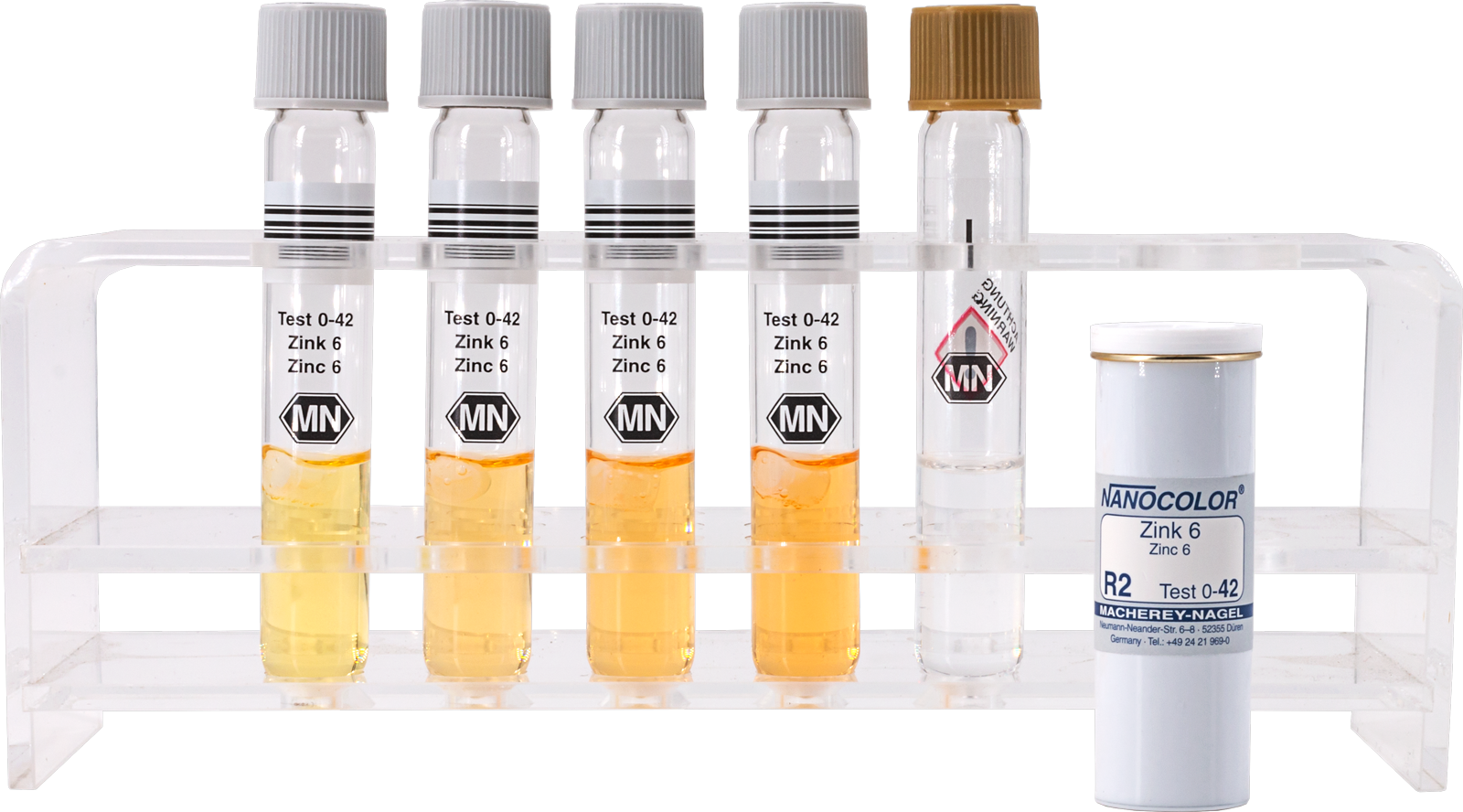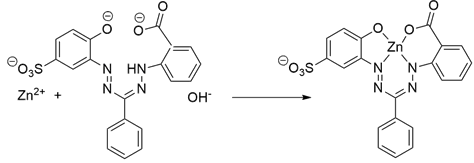Zinc
Precise rapid tests for water and waste water samples
Zinc salts are used in electroplating for the galvanic zinc coating of steel in order to achieve an
effective rust prevention. Also in cooling waters, zinc salts are applied as corrosion protection agents.
Our Zinc Products
| QUANTOFIX® Zinc |
HT |
2 - 100 mg/L Zn2+ |
91310 |
|
| NANOCOLOR® Zinc 4 🧪 |
TT |
0.10 - 4.00 mg/L Zn2+ |
985096 |
|
| NANOCOLOR® Zinc 6 🧪 |
TT |
0.20 - 6.00 mg/L Zn2+ |
985042 |
|
| NANOCOLOR® Zinc standard test |
ST |
0.02 - 3.00 mg/L Zn2+ |
91895 |
|
TT: Tube Tests
QT: Qualitative test papers
HT: Semi-quanitative test strips
CO: Colorimetric test kits
TI: Titrimetric test kits
PP: Powder Pillows
pH: Tests for pH determination
ST: NANOCOLOR® Standard Tests
Reaction basis
🧪
When carrying out the APHA 3500 Zn-F compliant test (REF 985096), Zincon forms a blue color complex
with zinc in an alkaline environment, which can be evaluated at 620 nm, the test turns brownish. The
also offered Zinc 6 tube test (REF 985042) test is based on a complex formation of 4- (2-pyridylazo)
resorcinol with zinc. This test is evaluated by a double determination at 470 and 490 nm.
Sample preservation
🧪
After adjusting the pH value to 1–2 with nitric acid, the sample can be preserved for storage for up to
1 month (storage vessel: PE or glass bottle).
Tips & tricks
🧪
- Decomposition
- For the determination of total zinc, decomposition with NANOCOLOR NanOx Metal (REF 918 978)
or the crack set (REF 918 08) must be performed prior to analysis. Generally a decomposed blank value should
be used as reference.
- Common sources of error
- When using VISOCOLOR® ECO Zinc, attention must be paid to the different sample volumes for
visual evaluation (1 mL) and photometric evaluation (5 mL).
- Sea water suitability
- After dilution (VISOCOLOR ECO Zinc 1+9, NANOCOLOR Zinc 4 1+1, NANOCOLOR Zinc 1+9), the method can also be used for analysis of sea water.
- pH value
- The pH value of the sample solution of 3–10 stated in the instruction leaflets must be
complied with. If necessary, adjust the pH with nitric acid or sodium hydroxide.
- For acidic, alkaline and buffered samples, measure pH after adding the sample (target:
pH 8.5–9.5) and adjust to pH 9 if necessary.
- Interferences
- Calcium interferes with the detection. For disturbance suppression, use the reagent for
lime precipitation (up to 20 g/L Ca2+, REF 918939).
- Further interfering ions are listed in the instruction leaflets.
- Turbidity
- Turbid solutions must be filtered prior to the determination of dissolved zinc;
turbidity leads to incorrect results: For coarsely
dispersed turbidities, use qualitative filter paper (e.g. MN 615), for moderately dispersed
turbidities, use glass-fiber paper (e.g. MN 85/70 BF) or or membrane
filtration set GF/PET 0.45 μm, for finely dispersed turbidities, use membrane filtration
kit 0.45 μm or GF/PET 0.45 μm.




